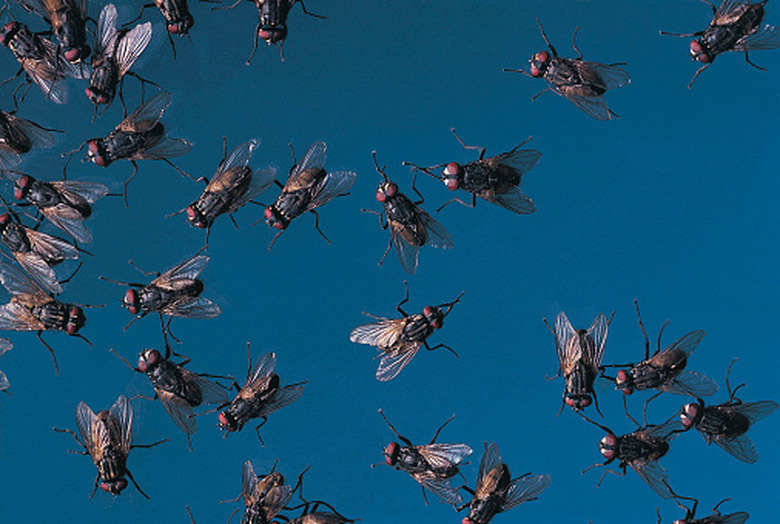How To Get Rid Of Bugs And Midges In The Yard
Things Needed
-
Citronella products
-
DEET repellent
-
Insect traps
-
Sticky pest strips
While there are midges that don't bite, the gnat-like ones — also known as no-see-ums — suck human blood. Masses of biting midges may drive you from an area with their attacks. Non-biting midges may cause issues by getting into food, laundry and window screens. To most effectively get rid of bugs and midges in the yard, use a combination of methods to reduce their numbers and deter their presence. Insect pests may be attracted to food, light or the easy meal that you present when you are outdoors during times of high insect concentration — particularly at dusk and dawn.
Step 1
Reduce or eliminate outdoor lighting. Many types of insect pests are drawn to light, including biting midges. Although you may also draw harmless and beneficial insects to illuminated outdoor areas, their presence may irritate even if they don't bite. If you cannot eliminate outdoor lighting, use the light to your advantage. Relocate it to an area away from house entryways and outdoor gathering spots to draw bugs to less frequently used locations.
Step 2
Eliminate pools of standing water in your yard and garden to help reduce mosquito and midge numbers. Mosquitoes and midges use stagnant water as breeding sites. Empty water from planters, birdbaths and rain gutters regularly.
Step 3
Pick up the fecal matter from your pets regularly and dispose of it in a sealed bag or container to reduce the presence of annoying flies. Keep your garbage cans covered. Locate compost piles far from your home and outdoor areas where your friends and family gather.
Step 4
Burn citronella products around the perimeter of areas where people congregate outdoors, such as on porches and patios. Use a DEET-based insect repellent on your clothing, and wear long sleeves and long pants to provide a barrier against bites and irritation.
Step 5
Set traps to reduce insect pest populations. Insect traps are usually designed to allow insects to enter, but prevent their escape. Pheromone traps located throughout your yard can attract and imprison pests such as moths and Japanese beetles. Flies may be captured by using rotting meat or chemical attractants as bait.
Step 6
Hang sticky pest strips in areas where people congregate outdoors to reduce annoying insects. Pest strips and other traps often use color as a lure to draw insects in. For example, whiteflies and aphids are drawn to the color yellow. Unfortunately, you may accidentally trap beneficial insects along with pests.
Step 7
Apply insecticides. Pyrethrins and Neem are effective against a range of insects. To effectively treat for a specific insect pest, identify the pest and find the appropriate insecticide, application method and application rate to treat for it, as not all chemicals are effective against every type of pest or stage of pest development. Typical warnings include to avoid use of insecticides around food, pets, children and open flames. These restrictions may limit your ability to use insecticides or to use your outdoor area for a period of time.
